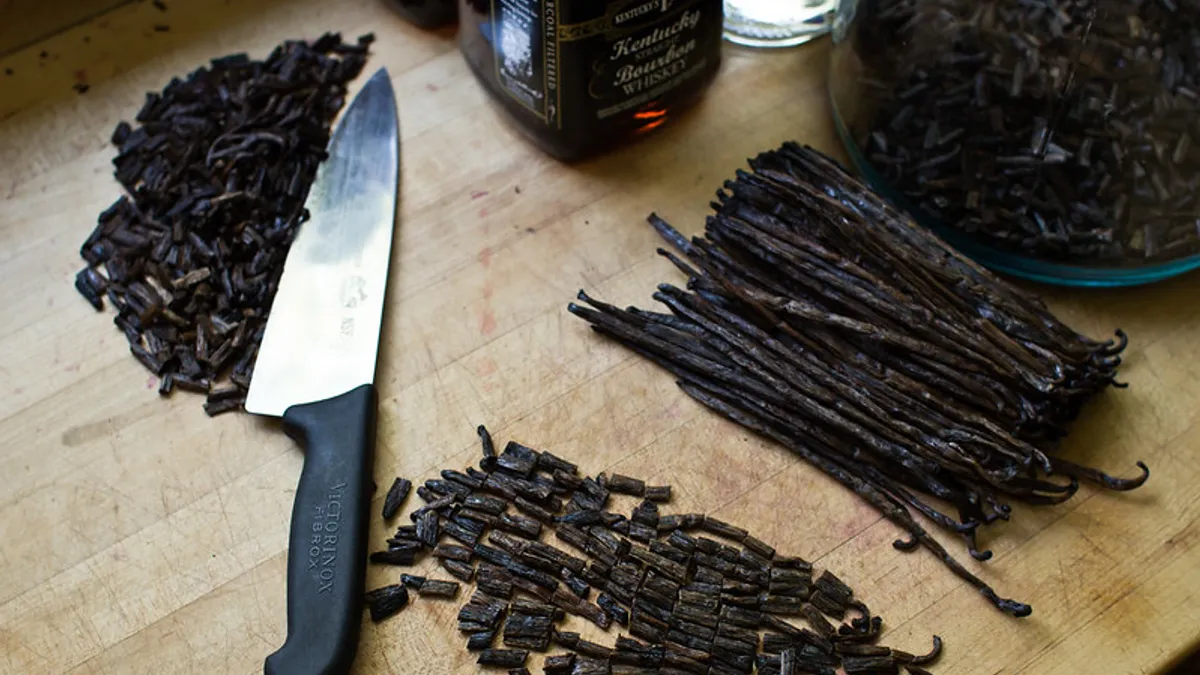The majority of the world’s vanilla supply comes from Madagascar, where Cyclone Gamane flooded fields and stripped vanilla pods from their vines, causing concern for an impending shortage.
The sweet flavoring that comes from the fruit of the orchid is also grown in other tropical regions including Indonesia, Mexico, Uganda and Tahiti. It ranks as the second most expensive spice, behind only saffron, because of its labor-intensive growing process, which involves pollinating and harvesting it by hand, followed by a several month long curing process.
Suppliers should consider diversifying the country of origin of their vanilla beans to avert a cocoa-like crisis for the sweet flavoring, according to vanilla suppliers and trade associations.
“Government interference, weather events, and other unexpected impacts can all affect the vanilla supply chain,” said Prossy Tumushabe, executive director of Association of Vanilla Exporters of Uganda Limited, in a statement. “Food and beverage brands and chefs can stabilize their supply and increase business flexibility by sourcing vanilla from multiple countries of origin.”
Uganda’s vanilla industry is positioning itself as an alternative to Madagascar, positing that its beans have a similar flavor profile while its climate and government offers stability. Uganda has the ability to produce in two growing seasons, with a smaller harvest in January in addition to its main harvest in the summer months.
“Similar to coffees or teas or chocolates, the soil that they’re grown in and the curing methods will have an impact on their flavor profile,” said Craig Nielsen, vice president of sustainability at Nielsen-Massey Vanillas, in an interview with Food Dive. “Uganda is very close to Madagascar geographically. Their [vanilla bean] flavor profile is very, very similar to the Madagascar, and I truthfully have come to like it a little bit more, especially in an ice cream, because it adds a little bit of a chocolate note – a warmth, a depth– to that flavor.”
Earlier this year, tropical Cyclone Gamane hit Madagascar, killing 18 and displacing thousands more, while ravaging vanilla farms. The market has been further destabilized by a surplus in the past two years, in addition to Madagascar adopting and then abandoning a minimum export price for vanilla beans. Recent harvests also resulted in a surplus.
This kind of volatility creates instability which can create uncertainties for producers, Nielsen said.
“We don’t have to be tied to Madagascar. There are other regions, specifically Uganda, that can match the quality and flavor of Madagascar and provide a consistent stable supply of product,” he said. “Uganda really provides a very good alternate, second source of vanilla that we need to educate our customers on, and get them interested in trying.”














